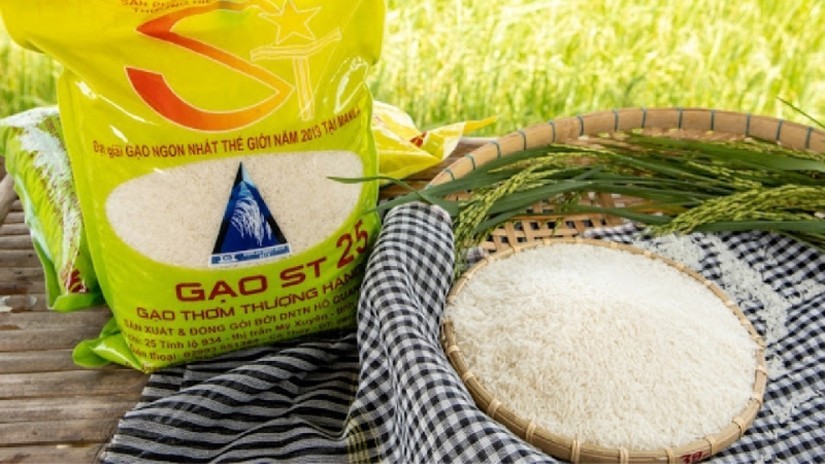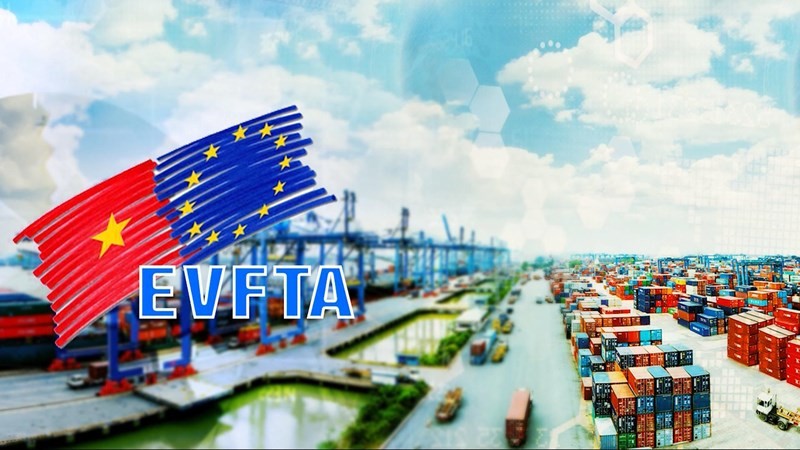
EVFTA: 'Golden opportunity' for Vietnamese rice export to conquer high-end market
Latest
 |
| In 2023, the amount of Vietnamese rice exported to the EU under EVFTA will increase by 15.4% compared to 2022. Illustrated image. (Source: Mekong ASEAN) |
The increase in rice export volume to the EU market is attributed to businesses capitalizing on the opportunities presented by the EVFTA.
Taking the Advantages of EVFTA
According to data from the General Department of Vietnam Customs, in the first quarter of 2024, Vietnam exported nearly 46,000 tons of rice to the EU market, with a turnover of 41.4 million USD, an increase of nearly 118% compared to the same period last year. Notably, the French market saw a surge with 18,200 tons, valued at 19.1 million USD, an increase of nearly 180 times compared to the same period last year.
The Vietnam Export-Import Report 2023, released by the Ministry of Industry and Trade on May 16, also stated that in 2023, the total rice export volume nationwide reached 8.13 million tons, valued at 4.7 billion USD, an increase of 14.4% in volume and 35.3% in value compared to 2022.
While Asia continued to be Vietnam’s largest export market in 2023, reaching 6.1 million tons and accounting for 75% of total exports, an increase of 22.8% compared to 2022, the European market, although comprising a small share of Vietnam's total exports (about 1.6%), saw a 15.4% increase in rice exports to the 27 EU member states compared to 2022. This is considered a positive sign for Vietnamese rice to conquer this high-end market.
In the first three months of 2024, Vietnam exported 2.1 million tons of rice, with a turnover of 1.4 billion USD, an increase of 12% in volume and 40% in value compared to the same period last year. Currently, global rice consumption demand is high. However, in April, world rice prices continuously declined due to Vietnam and many countries entering the peak harvest season.
According to the Ministry of Industry and Trade, the increase in rice export volume to the EU market is due to businesses capitalizing on the opportunities from the EVFTA Agreement. Many enterprises reported good revenue from developing export markets to the EU. In comparison to other rice-exporting countries, Vietnam has the greatest competitive edge in EU markets thanks to free trade agreements like EVFTA.
Nguyen Duy Thuan, CEO of Loc Troi Group, one of the leading enterprises in the rice industry, said that in 2023, Loc Troi exported 20,263 tons of rice to the EU, an increase of 26% compared to 2022, with a total turnover of over 12 million USD. By the end of the first quarter of 2024, the company had exported nearly 2,700 tons of rice to Europe, valued at nearly 2 million USD.
Besides the French market, Loc Troi rice, branded as "Com Viet Nam Rice," has also reached other EU countries such as Germany, the Netherlands, and Austria.
According to Mr. Thuan, thanks to the EVFTA with its tax incentives, the export of fragrant rice and high-quality rice to the EU market is encouraged and has yielded positive results. This outcome also demonstrates the increasing quality of Vietnamese rice, meeting the stringent requirements of demanding markets.
Under the commitments of the EVFTA, the EU grants Vietnam a quota of 80,000 tons of rice annually. Particularly, the Union will completely liberalize broken rice, allowing Vietnam to export an estimated 100,000 tons to the EU each year.
For rice products, the EU will reduce tariffs to 0% over 3-5 years. This opens up opportunities for Vietnamese rice to compete with other countries when exporting to the EU. Currently, Vietnam has risen to the 8th position among non-EU countries supplying rice to the EU.
Expanding the Export Portfolio, entrenching place in the market
Within the framework of implementing the EVFTA, nine fragrant rice varieties currently enjoy tax incentives within the quota when exported to the EU, including Jasmine85, ST5, ST20, Nang Hoa 9, VD20, RVT, OM4900, OM5451, Tai Nguyen Cho Dao. This list was established before 2015 (when EVFTA negotiations were concluded).
 |
After nearly four years of implementing the agreement (since August 1, 2020), Vietnam is proposing to adjust the list of fragrant rice varieties for export to the EU with a 0% tax rate under the quota to better align with the current reality of Vietnam's rice exports. The negotiation for adjusting and supplementing the list of fragrant rice varieties is being carried out by the Department of International Cooperation in coordination with the Department of Crop Production (Ministry of Agriculture and Rural Development) in discussions with the EU.
The average annual per capita consumption of rice in the EU is about 6 kg, while the global average per capita consumption of rice is about 54 kg. Assessments suggest that the EU market still has significant potential for the growth of Vietnamese rice exports because the EU's total annual rice import demand reaches about 3-4 million tons (according to Eurostat data), while Vietnam's export volume to the EU accounts for only a very small portion.
However, this market has many stringent and demanding standards, especially regarding food safety, pesticide residues, fertilizers, and social standards. The rice must not contain coloring, flavoring, preservatives, or bleaching agents. The residue threshold for pesticides in rice is below 0.01 mg/kg, and EU importers and regulators regularly check food safety quality.
Notably, these standards are frequently updated to become increasingly higher and stricter. Therefore, Mr. Ta Hoang Linh, Director General of the European and American Market Department, under Ministry of Industry and Trade, recommended export businesses closely monitor and grasp the market’s information, policies, and regulations. This requirement is considered a major barrier for Vietnam's rice exports because it requires additional costs for compliance and meeting standards, which reduces competitiveness.
Sharing his experience in successfully exporting rice to the EU market at high prices, Mr. Pham Thai Binh, Chairman of the Board of Directors of Trung An Hi-tech Agriculture Joint Stock Company, said that the EU market is particularly high-end and can accept the import of high-grade rice at prices up to 2,000 USD per ton. However, they have very high requirements for quality and food safety. Therefore, businesses must strictly comply with EU standards to secure high-value and long-term rice export contracts.




















